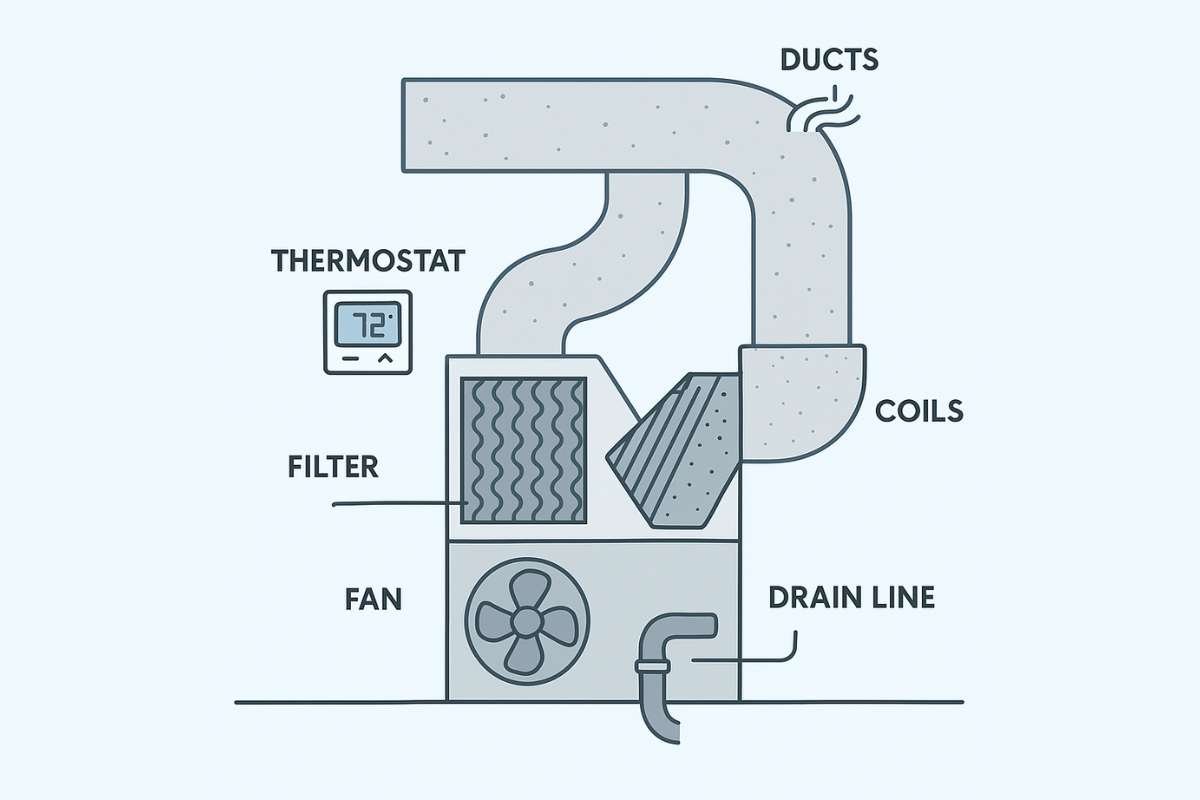So, you’re thinking about opening a convenience store? That’s a smart move! These little shops are a big part of our daily lives, making it super easy to grab snacks, drinks, and essentials on the go. But before you jump in, there’s a lot to think about. From picking the right location to figuring out what to sell, knowing how to open a convenience store can really set you up for success. In this guide, we’ll break down everything you need to know to get your store up and running smoothly.
So Let’s Start With Your First Step in How to Open a Convenience Store:
1. Research and Planning
Before jumping into any business, thorough research and planning are essential. When thinking about how to open a convenience store, it’s important to understand the industry, the market trends, and your potential competitors. First, you need to assess the demand for a convenience store in the area where you plan to operate. Who are your target customers? What are their shopping habits? Are there other stores nearby offering similar products?
Once you have an understanding of your target market, you can create a business plan. A strong business plan is the strength of any successful venture and should outline your goals, strategies, and the operational details of your convenience store. Main elements of the plan should include the store’s budget, expected revenue, inventory management, and staffing needs. Additionally, consider what types of products you’ll offer. Will you focus on traditional convenience store items such as snacks, beverages, and personal care products, or will you include specialized products like organic goods or prepared foods?
2. Securing Financing
- Startup Costs: Expenses include property, inventory, equipment (e.g., refrigerators, shelving), and permits. Costs range from $50,000 to $150,000.
- Financing Options: Fund via personal savings, business loans, investors, or small business grants (especially in underserved areas).
3. Choosing a Location

Location is one of the most important factors when considering to start a convenience store. The store’s success is dependent on its accessibility and visibility. High foot traffic areas such as busy intersections, neighborhoods, or locations near schools or offices are prime spots for a convenience store. Customers rely on convenience stores for their ease of access, so selecting a site that is easily reachable for both pedestrians and drivers is important.
However, you also need to be mindful of nearby competition. While it might seem like a good idea to set up shop in a high-traffic area, being located too close to a well-established competitor could hurt your chances of success. You want to strike a balance between being in a busy area and avoiding direct competition, at least in the early stages.
4. Licensing and Permits

You will need various licenses and permits to operate your store legally.
- Business License
- Food and Beverage License
- Health Permits
- Sales Tax Permit
5. Stocking Your Store
The next step in how to open a convenience store is to carefully plan out your inventory. Convenience stores typically carry a wide variety of items ranging from snacks, drinks, and over-the-counter medicines to household goods and toiletries. However, it’s crucial to tailor your product selection to your customer base. Based on your research, you should have a good idea of what items will sell well in your specific location.
Finding reliable suppliers is essential to keeping your shelves well-stocked. Many convenience stores work with wholesalers, distributors, or direct suppliers to ensure they have a steady supply of popular items. You will want to establish relationships with vendors who can offer you competitive pricing and consistent delivery schedules.
Inventory management is also important. Overstocking can tie up cash in unsold goods, while understocking can drive customers away if they can’t find the products they want. A good POS system can help you track sales trends and ensure you are maintaining an optimal inventory level.
6. Marketing Your Convenience Store
Marketing is often overlooked in the process of how to open a convenience store, but it plays a key role in attracting customers and building brand loyalty. In the early stages, focus on building awareness in your local community. Eye-catching signage outside your store can help bring in walk-in traffic, but you’ll also want to explore additional ways to get the word out.
Consider running grand opening promotions to draw attention to your new store. Offering discounts on popular items or holding a loyalty program can encourage repeat customers. Local advertising can also be effective. Flyers, social media, and even word-of-mouth are great ways to promote your business without breaking the bank.
Today, having an online presence is important even for a brick-and-mortar business like a convenience store. Creating a Google Business Profile helps customers find you easily online. Additionally, maintaining an active presence on social media allows you to engage with the community and keep them informed of special deals or new products.
7. Hiring and Managing Staff

If you’re learning how to open a convenience store, one of the final steps is hiring the right staff. The employees you hire will be the face of your store, so it’s important to select individuals who are reliable, friendly, and customer-oriented. The size of your store will determine how many employees you need, but at the very least, you’ll need cashiers and possibly stock clerks.
Staff training is crucial. Your employees should know how to handle transactions, restock inventory, and provide excellent customer service. They should also be trained in security protocols and handling challenging situations, such as dealing with difficult customers or managing theft prevention.
Statistics for Informed Decision-Making
When learning how to open a convenience store, analyzing the industry’s numbers and trends is critical to ensure your business succeeds. Below are key statistics and figures that will help guide your decisions:
| Convenience Store Industry by the Numbers | |
| Industry Growth and Revenue | Number of Stores: 150,000+ stores across the U.S.Annual Sales: Over $650 billion Retail Traffic: Convenience stores account for 35% of total retail visits Average Store Revenue: $1.5 million annually |
| Customer Behavior Insights | 44% of sales are from beverages (coffee, soda) 30% of sales come from snacks (chips, candy)Average Customer Spend: $5 to $10 per visit Healthy Products: Increasing demand for fresh food (salads, sandwiches) |
| Profitability by Product Category | Low-margin items: Alcohol and tobacco (high sales volume, lower margins)High-margin items: Prepared foods and beverages (~50% profit margin) |
| Labor and Operating Costs | Labor Costs: 12% to 15% of total sales Operating Costs: Aim to keep these between 30% and 40% of revenue Staff per shift: 2 to 4 employees |
In this video, you will learn how to start a convenience store business. Let’s take a closer look at what goes into starting a convenience store and how we can make yours profitable before we get started.
Conclusion
Opening a convenience store can be a profitable and fulfilling business, but it requires careful preparation and execution. From selecting the right location to stocking your shelves with popular products, each decision plays a crucial role in the success of your store. By following these steps, you’ll have a solid foundation on how to open a convenience store and can look forward to running a thriving business that meets the needs of your community.


















